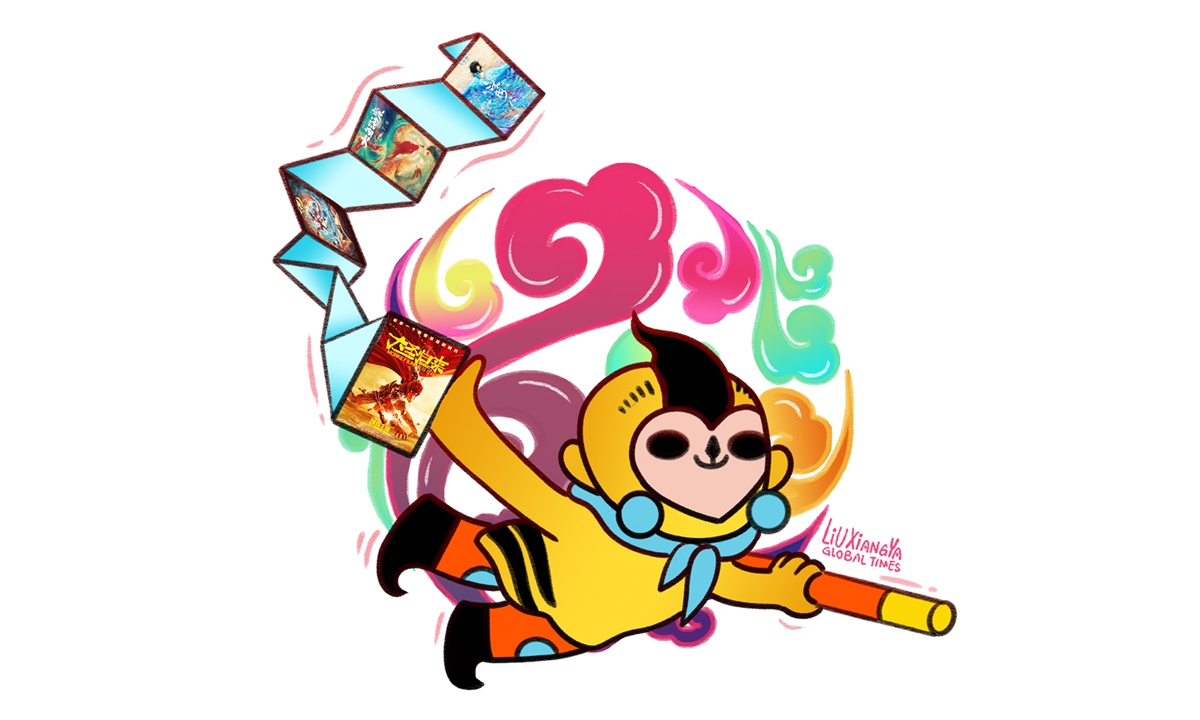
Illustration: Liu Xiangya/Global Times
From Tuesday to Saturday, the 19th China International Cartoon and Animation Festival was held in Hangzhou, East China's Zhejiang Province. As a major exhibition for animation, it emphasized integrating traditional Chinese culture into the medium. This idea has been shared by the industry insiders and will surely help promote the development of Chinese animation in the future.
Over the past decade, Chinese animation has made remarkable progress and some works won recognition in the international market. The most popular films include the works
Deep Sea,
The Legend of Luo Xiaohei,
Nezha,
The Legend of Deification,
White Snake,
Big Fish & Begonia,
Monkey King: Hero Is Back as well as The
Boonie Bears series.
Of them, the most impressive film is
Nezha. The story is based on a Chinese legend about
Nezha, a heavenly god who wipes out demons. Actually, this was not the first Chinese animated film about
Nezha. In 1979, the film
Nezha Conquers the Dragon King was first shown. Comparing the two films that are 40 years apart, we can see a big difference. In the old version,
Nezha's image was based on Chinese operas, murals and folk paintings, while in the new version, the design of
Nezha has a breakthrough by having the character wear a straight-bang hairstyle, have gaping teeth and bare feet - a typical naughty image. More importantly, in the old version,
Nezha was absolutely obedient to his father, while in the new version, the hero is extremely rebellious as he fights against his fate. However, something in common between them is traditional Chinese culture, which has been a tremendous source of the creation for Chinese animated works.
In 2019, the film won a score of 7.5 on IMDb for its dazzling visual effects, kung fu action and story. It showed that combining traditional Chinese culture with modern ideas can work as an effective way to succeed in the making of Chinese animated works.
Chinese animation has also made a leap forward in terms of technique. For example, in the film
Deep Sea released in early 2023, advanced technologies such as ink-style voxels were used to make the 3D film look like a traditional "ink wash painting." It departed from the common depictions of a dark and dim sea by integrating hundreds of colors. It turned the sea into an "overthrown color jar" and presented an "unprecedented" underwater world. This animated film was nominated at the 73rd Berlin Film Festival - the first original Chinese 3D animation to achieve such an honor. Some foreign media commented that the film's "production was beyond imagination." It helped make Chinese animation known to the world together with traditional culture.
Another reason why Chinese animation should stick to its own culture lies in that it has a genuine and deep understanding of the country. Previously, some Western countries made a few films based on Chinese legends such as Mulan. Hua Mulan is a household name in China as a heroine who stayed filial to her father. However, due to different cultural backgrounds and misconceptions about Asian culture, the heroine in this film seeks out individualism, which seems too Westernized and "strange" to the eyes of the Chinese audiences. In addition, it will be a good way for China to preserve its traditional cultural elements through animations. For example, since traditional Chinese game
Weiqi, or Go, first appeared in Japanese anime, it might be misunderstood that it originated from Japan instead of China.
Furthermore, a most effective method to popularize Chinese animation is to evoke empathy through stories. Li Zao, general producer of the Chinese animated series Yao-Chinese Folktales, said, "We have tried to integrate current social context and modern aesthetics with traditional Chinese culture, which sparked strong empathy among audiences."
Yet some people worry whether traditional Chinese culture can be understood by audiences today or in other countries.
"True excellent content has universal values," said Yu Zhou, co-founder of Light Chaser Animation Studios. He also pointed to
Nezha as an example. "Although foreign audiences may not understand his tools such as his red armillary sash and fire wheels, his rebellious spirit can evoke empathy among all audiences."
URL: https://www.seeglobalnews.com/read-1754.html